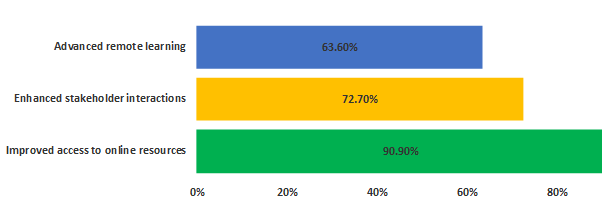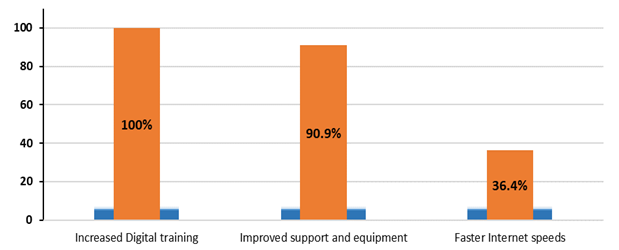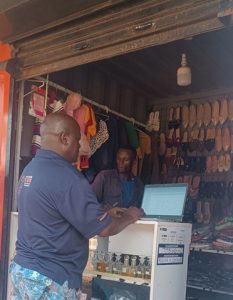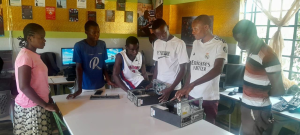The study on data usage using internet connectivity in primary schools was administered to 112 people, including 70 teachers, 7 school administrators, and 35 grassroot leaders within the school’s ecosystem. As internet access expands, the community’s schools, offices, and residents are riding a digital wave that is changing the way they live, learn, and work.
A Snapshot of Internet Usage
Internet access has become a cornerstone in Ugunja, especially among schools and local government offices. Administrators and headteachers lead the way, accounting for 54.50% of internet users, highlighting its crucial role in leadership and teaching. Teachers follow closely, comprising 45.50% of users.

Internet Availability and Usage Packages
Ugunja boasts a robust internet infrastructure, with all centers reporting uninterrupted access. The majority of institutions (81.8%) have been utilizing the internet for 6 months to a year, while 18.2% are newer to this digital landscape. KijiShule is the most popular data plan, used by 81.8% of users, followed by Nyasi-1 hour at 72.7%. Longer-term plans are less favored, reflecting a preference for shorter-duration plans.

Digital Activities on the Rise
The internet is powering a wide range of activities in Ugunja. 81.8% of users leverage it for learning and administrative tasks, while 72.7% engage with educational games. Additionally, 63.6% of users are tapping into e-government services, though this area still has room for growth. Device usage varies across institutions. Schools like Ngunya Primary lead in tablet utilization, while the Chief’s Office primarily relies on smartphones.

Performance and Satisfaction
Ugunja’s internet services have largely exceeded expectations. 72.7% of users rate the service as “excellent,” while 27.3% find it “satisfactory.” A few hiccups exist, but overall, connectivity remains stable. User satisfaction mirrors performance, with 54.5% reporting being very satisfied and 45.5% satisfied.

The Internet’s Impact on Ugunja’s Future
Improved internet access has led to better access to online resources (90.9%), enhanced stakeholder interactions (72.7%), and boosted remote learning (63.6%). However, e-government services remain underutilized.

Bridging the Gaps
While Ugunja is making significant strides, challenges remain. 100% of users seek more training, 90.9% require better equipment and support, and 36.4% desire faster speeds.

Cost and Connectivity
The cost of internet access is relatively affordable, with an average of 0.25 Mbps per device being sufficient for basic needs. The average cost per user is Kshs 64.81 annually or Kshs 5.35 per month, well below the industry benchmark.

Recommendations:
The key areas that require attention to address the digital access in Ugunja are as follows:
a) Infrastructure and Device Access
- Invest robust infrastructure for access and digital resources as cornerstone of ICT intervention
- Explore opportunities to partner with private sector companies to provide affordable internet access and devices to schools and communities.
- Support local capacity initiatives that maintain and manage ICT infrastructure, ensuring long-term sustainability.
b) Teacher Training and Capacity Building
- Implement mentorship program for teachers with those new to ICT integration, fostering knowledge sharing and skill development.
- Ensure that teacher training aligns with the national curriculum to promote effective integration of ICT into teaching and learning.
- Provide continuous professional development opportunities for teachers with the latest ICT trends and best practices.
c) Bridging the Digital Divide
- Support community technology centers to provide access to technology and training for students and their families.
- Implement comprehensive digital literacy programs that address the needs of both students and parents.
- Explore innovative and cost-effective internet access and devices to low-income families.
Additional Considerations
- Emphasize on data privacy and security in ICT projects. Support initiatives that implement robust measures to protect student information.
- Encourage the use of Open Educational Resources (OER) to enhance access to quality learning materials.
- Support rigorous evaluation to measure the impact of ICT interventions and inform future investments







